The Sony α6300 and Sony α6500 – launched in 2016 – distilled features from Sony’s flagship full-frame models into more compact and affordable packages that many consider among the best cameras available. The α6400 launched as an addition to this line-up, and its picks up precisely where its predecessors left off. It boasts some truly exciting pro-level features and will be of equal interest to those shooting still and video. At £949 body only, it’s pretty competitively prices considering the spec (especially if you grab one second-hand).
Note: This review was originally published in Practical Photography magazine. No opinions have been changed from the time of review.
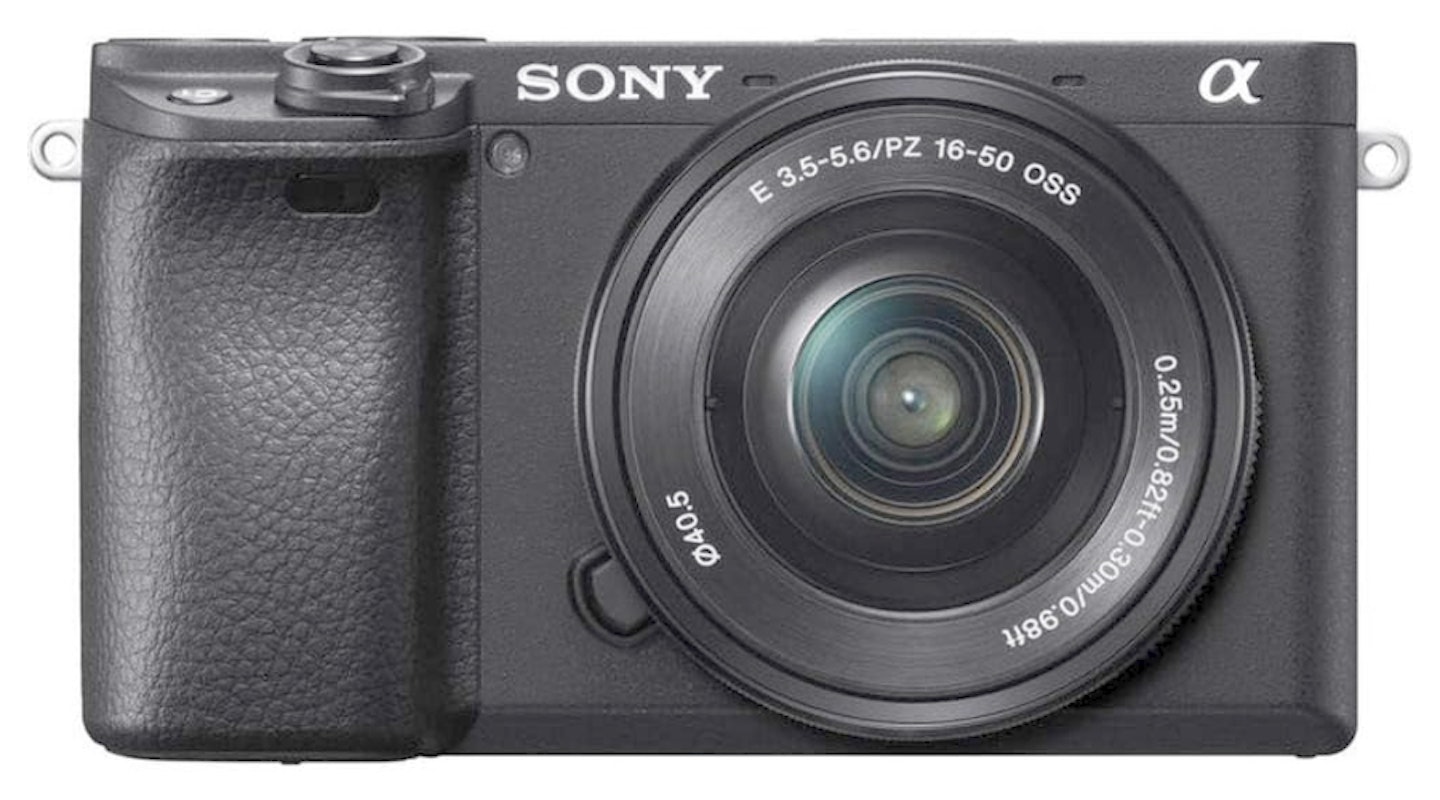 Sony
SonyPros
- World-class autofocus system
- 180-degree tiltable LCD
- Fast 11fps shooting and 4K video
- Remarkable image quality
Cons
- No image stabilisation
- Limited touchscreen
- Complex menu
| Effective resolution | 24.2MP |
| Processor | BIONZ X |
| LCD | 3in 921k-dot tiltable LCD with touch focus |
| Shutter | Bulb, 30-1/4000sec |
| Autofocus | 425-point phase detection, Real-Time AF Tracking |
| ISO | 100-32,000<br>(expanded to 102,400) |
| Shooting speed and video | 11fps for 46 RAWs. 4K 3840x2160 (24p), Full HD 1920x1080<br>(120p, 60p, 30p, 24p) |
| Other features | Interval shooting, Smile Shutter, NFC, Wi-Fi & Bluetooth, S-Log profile for video, Zebra stripes, Mic-in jack, Sweep Panorama, Scene Selection. Battery life:410 shots via LCD |
| Card type | 1x SD, SDHC, SDXC |
| Size and weight | 120x67x60mm, 403g |
Main features
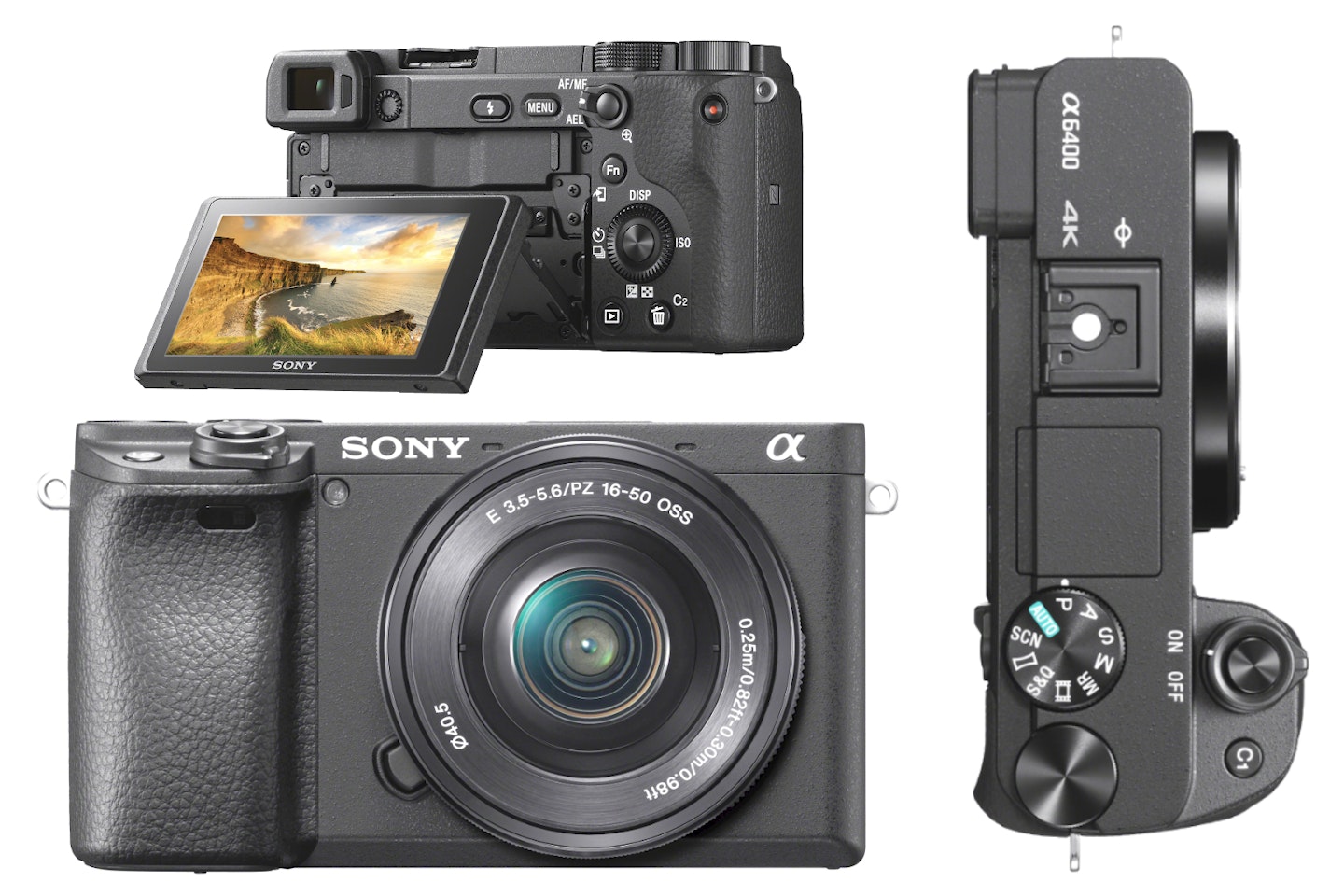
At first glance, it might not seem like much has changed since 2016. The α6400 opts for a 24.2MP APS-C Exmore sensor powered by a BIONZ X processor. It shoots at 11fps, had 425 Hybrid AF points and a three-inch 921k-dot LCD display. These features are also found on the α6300 spec sheet, so what is Sony playing at?
The truth is there’s a much bigger difference between the generations than the specs suggest. The BIONZ X processor shares its DNA with the great processor found in Sony’s former flagship full-frame α9. It’s not identical, but is closely related and allows for a hefty performance boost in real-world terms.
The upgraded sensor brings new benefits, such as improved colour science and low-light ISO performance. This means more accurate skin tones and an improved ISO, so you’ll notice a difference when set against the α6300 files.
Arguably the most exciting improvement isn’t a new piece of hardware, but an algorithm powered by the new processor. It brings Sony’s Real-Time Eye AF and Real-Time Tracking AF to the α6400. The focus system uses AI-based subject recognition and offers persistent tracking with a rapid 0.02sec AF speed.
The camera also offers enhanced video functionality, with 4K capture, making it a potential camera for YouTube vloggers. The fine-tuned processor isn’t at risk of overheating like older models, so the 29min 59secs recording time cap has been lifted. Now it’s limited to your SD card capacity or the battery life, which also benefits from an increase, due to the more efficient processor.
The α6400’s touchscreen can tilt up 180-degrees, which will interest those who vlog.
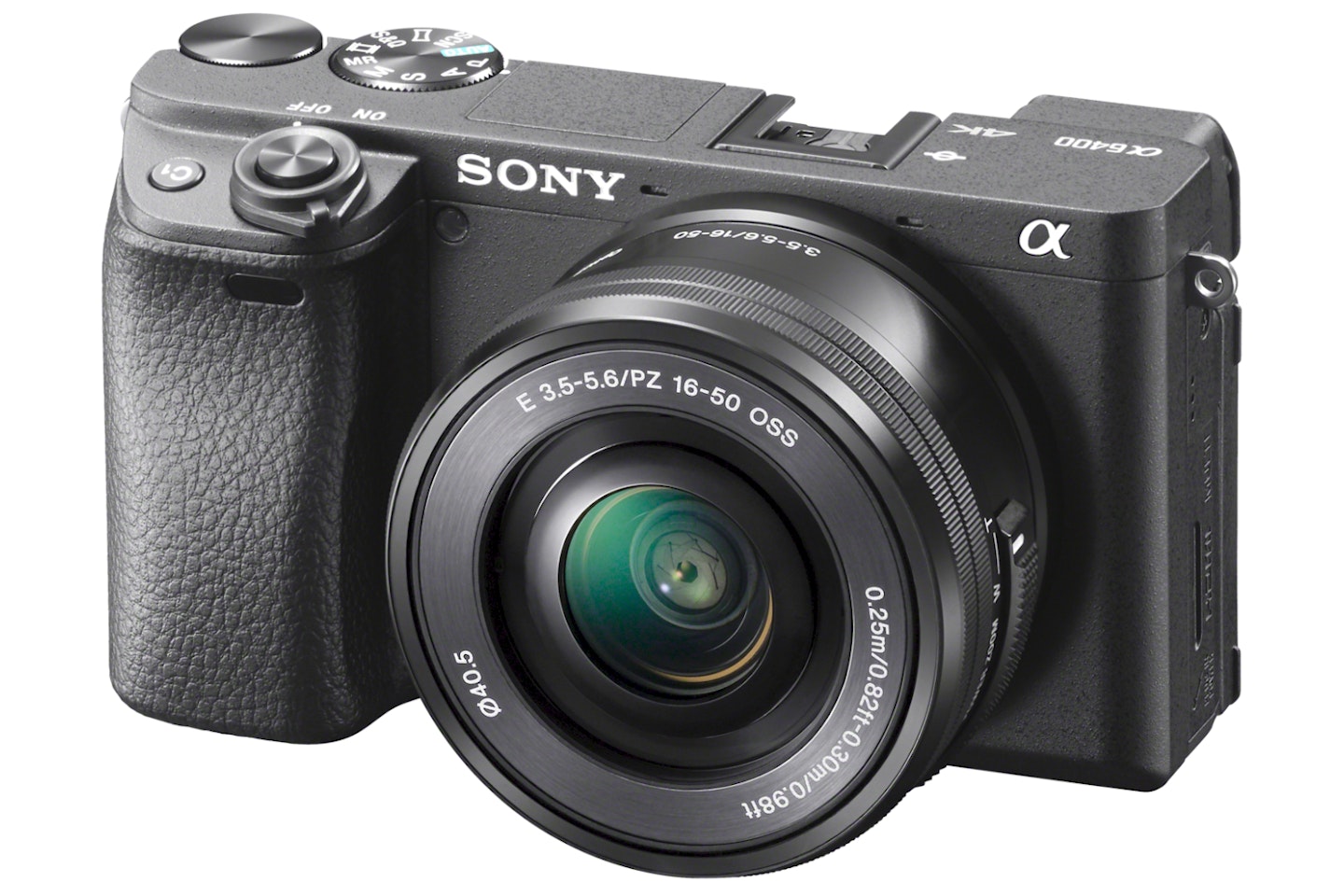
Compact design: The Sony α6400 is small and light enough to be a convenient travel camera. It has a slender profile measuring 120x67x60mm and weighs 403g without a lens.
Finer detail: The α6400 sports a 24.2MP APS-C sensor at its core – big enough to render fine detail and produce large prints – and has a new maximum native ISO setting of 32,000.
Real-time tracking: Sony’s AF technology is one of the best on the market right now. The α6400 uses new AI algorithms to maintain a sharp focus on human eyes or moving subjects with ease.
Lots of lenses: The α6400 uses Sony’s E-mount. Built for its CSC line-up, it provides access to a wide variety of high-quality lenses.
Creative compositions: The 3.0in LCD has a nifty 921k-dot resolution, provides100 per cent coverage and can be titled to help frame up creative compositions or flip up and face forward for vlogging. The LCD is also a touchscreen allowing you to tap to set the focus point.
Your shooting style: The α6400 has eight custom keys which can be programmed to access over 89 different functions. This allows you to adapt the camera to your own shooting style and provide access to your most used settings.
Performance

The most striking innovation on the α6400 is the AF system. For a camera at this price point it’s ground-breaking. the 425 points are extremely fast and responsive and cover 84 per cent of the frame. We don’t have the science to test Sony’s claim of a 0.02sec AF speed, but it certainly is lightning quick. And it’s astoundingly accurate too. the new real-time AF tracking is nothing short of awesome. One of the biggest challenges when photographing people is getting a tack-sharp focus on the eye, and with Sony’s tracking algorithm, it consistently maintains the focus even under challenging conditions, allowing you to concentrate on the framing. You can even pre-select whether you’d like to focus on the left or right eye, along with a comprehensive set of other options.
Image quality is the bee’s knees

The α6400’s 24.2MP APS-C sensor is powered by the latest version of Sony’s BIONZ X processor. This powerful pairing delivers excellent image quality with some pleasing colours and satisfying fine detail. Straight out of the camera, the JPEGs are bright, bold and sharp – a boon if you’re not comfortable with editing. The RAW files contain a heap of detail in both the highlights and shadows thanks to the camera’s excellent dynamic range. The ISO performance also impressed, with noise barely noticeable below ISO 3200 (this shot of a bee was ISO 1250), and we found shots didn’t suffer too much up to ISO 12,800. The image quality of the α6400 competes with the best of the current APS-C cameras.
The menu, screen and video

The menu can be a little over-complicated. It’s not difficult to set up, but there are three menu pages for the AF system alone. On one hand, it’s great that you have this level of control, but on the other it could be a little exhausting for the more casual user. However, Sony must be aware of this, and so included the my menu feature, allowing you to collate your most-used settings in one place for speed of access.
If you’re not using the new real-time tracking functions, you can set the AF point by tapping on the rear LCD or swiping while using the EVF. This touch functionality is new to the range and is a welcome addition, but already feels a little dated when some rivals offer full navigational touch. The resolution of the LCD and EVF is also a little modest, having not moved on from the previous generation, but they’re still satisfactory.
Apart from the new touch functionality, the other big development of the LCD is the fact it can flip up and face forwards. This will primarily appeal to vloggers, but once an external microphone is mounted to the hotshoe you can no longer view the screen. Annoying, yes, but the solution is to use a cage or bracket for the camera to mount the microphone off-centre.
That minor gripe aside, the α6400 is a very adept video camera. It can shoot 4K footage without cropping the sensor at 30p or 24p, and Full HD up to 120p. you can choose from a variety of Picture Profiles including S-Log for colour grading. The video output looks great, but there are rolling shutter issues that cause vertical lines to appear wavy, only fixable in top-spec video editing software.

When it comes to shooting stills the α6400 is rapid, with a top speed of 11fps. this reduces to 8fps if you want to use the silent shutter mode. the buffer capacity is fairly decent, with a limit of 116 JPEGs or 46 RAWs. While capture is fast, the camera start-up time feels slow and playback isn’t instantaneous.
Sony lens line-up

The Sony α6400 uses E-mount lenses. Sony’s E-mount lenses are purpose built for their mirrorless cameras, and are manufactured by Sony, Samyang, Sigma, Zeiss and Tamron, along with some more specialist, less well-known names. They’re available in a range of primes and zooms, with focal lengths starting at 10mm at the wide end up to 400mm telephoto lenses. There’s a good choice of optics to suit all budgets; prices start at £179 and that’ll get you the Sony FE 50mm f1.8 lens, which is an ideal lens for portraits. E-mount lenses are split into two categories. Sony E lenses are designed for cameras with APS-C sensors, while FE lenses are intended for full-frame cameras. The good thing is you can use both E and FE formats on the α6400, giving access to over 100 lenses.
Verdict
The Sony α6400 is a very capable camera. It’s difficult to overstate just how valuable the Real-Time Eye AF system is. It’s a game changer. It’ll improve anyone’s focusing hit rate, so if your primary concern is a camera that will help you get the shot with minimal fuss, this one has to be considered. The rest of the performance is good too.
Image quality is pleasing, the shooting speed is ample and the video powerful. The α6400 isn’t perfect, though. the body aesthetic is uninspiring, especially when compared to the Fujifilm range with their popular vintage vibe. The controls are a little dated, and the menu system isn’t the most enjoyable. It’d be great to see features such as an image stabilisation system, a better touchscreen, and an enhanced EVF and LCD resolution, but these are likely to be included in any future update to the α6500. Just keep in mind the price – it comes in at under a grand and, for the money, you would be hard-pressed to find a better all-rounder.
When all’s said and done, the α6400 is an ideal camera to document events, take crisp portraits, and capture video, added to the fact that it’s light and compact enough to easily take on holiday.
Other items to consider
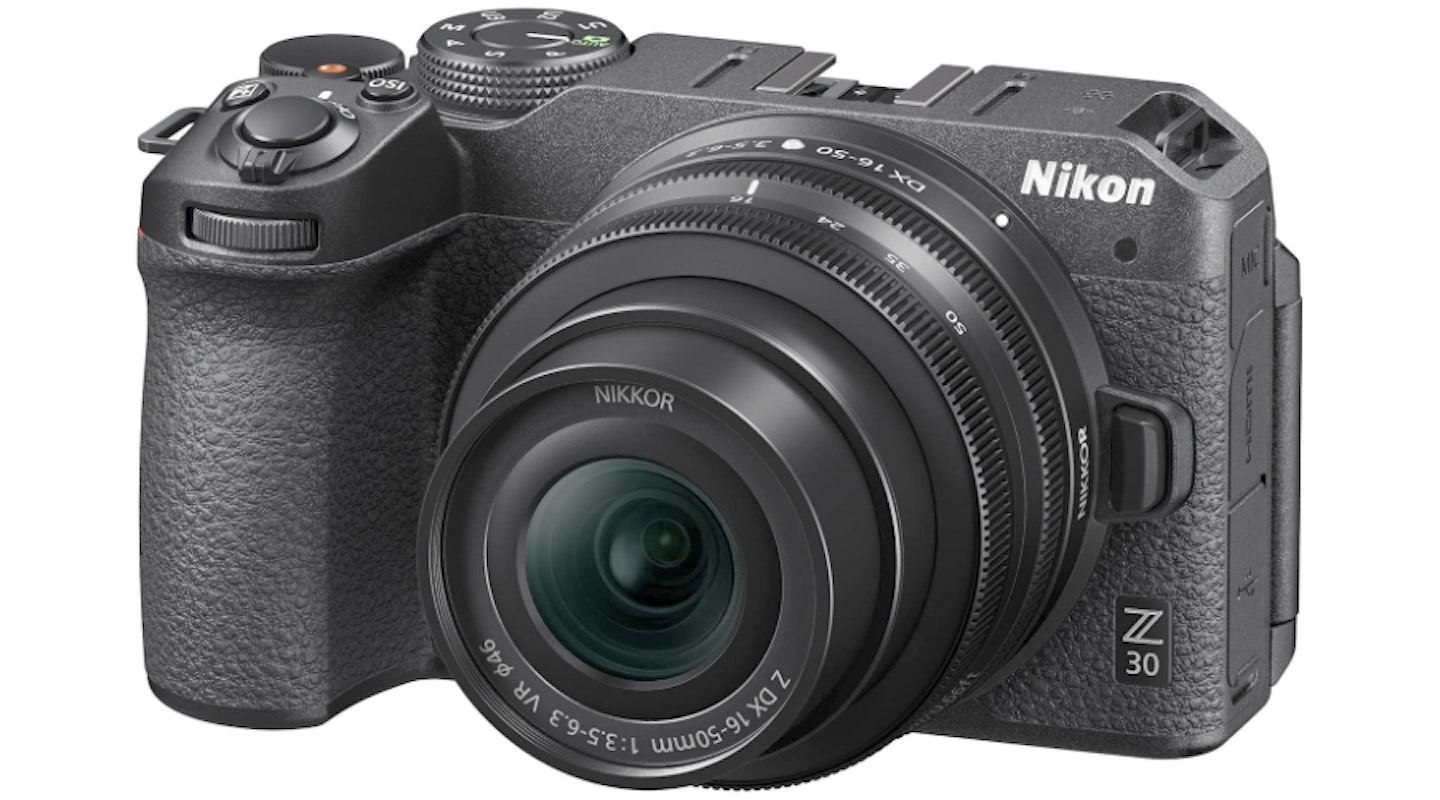
A light and accessible bundle for newcomer photographer and vloggers, with great AF modes and tracking.
Read our review.
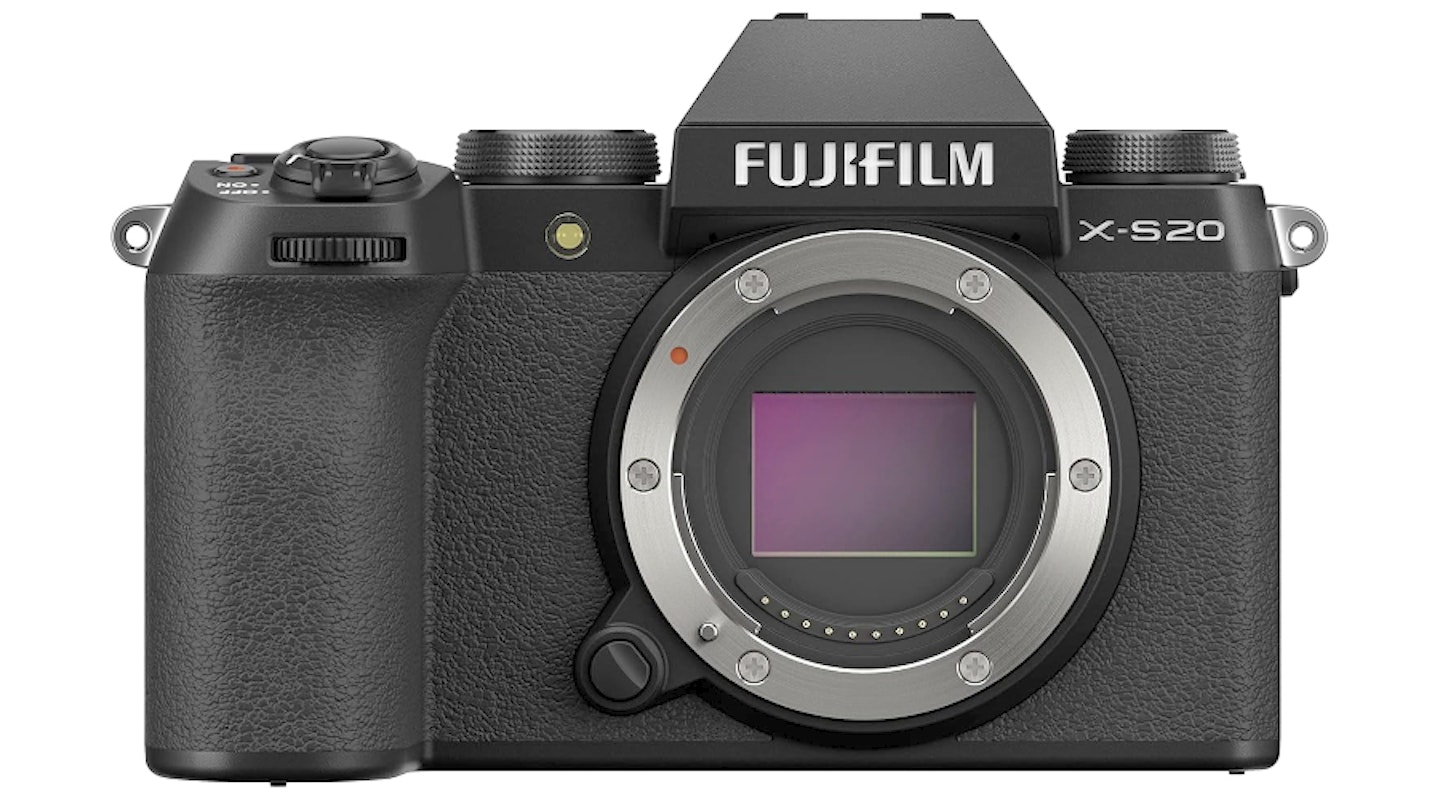 Fujifilm
FujifilmThe X-S20 combines Fujifilm’s fantastic colours and Film Simulations with in-body stabilisation to deliver a great travel camera or vlogging camera. We loved the X-S10 when we reviewed it, and this continues the legacy.
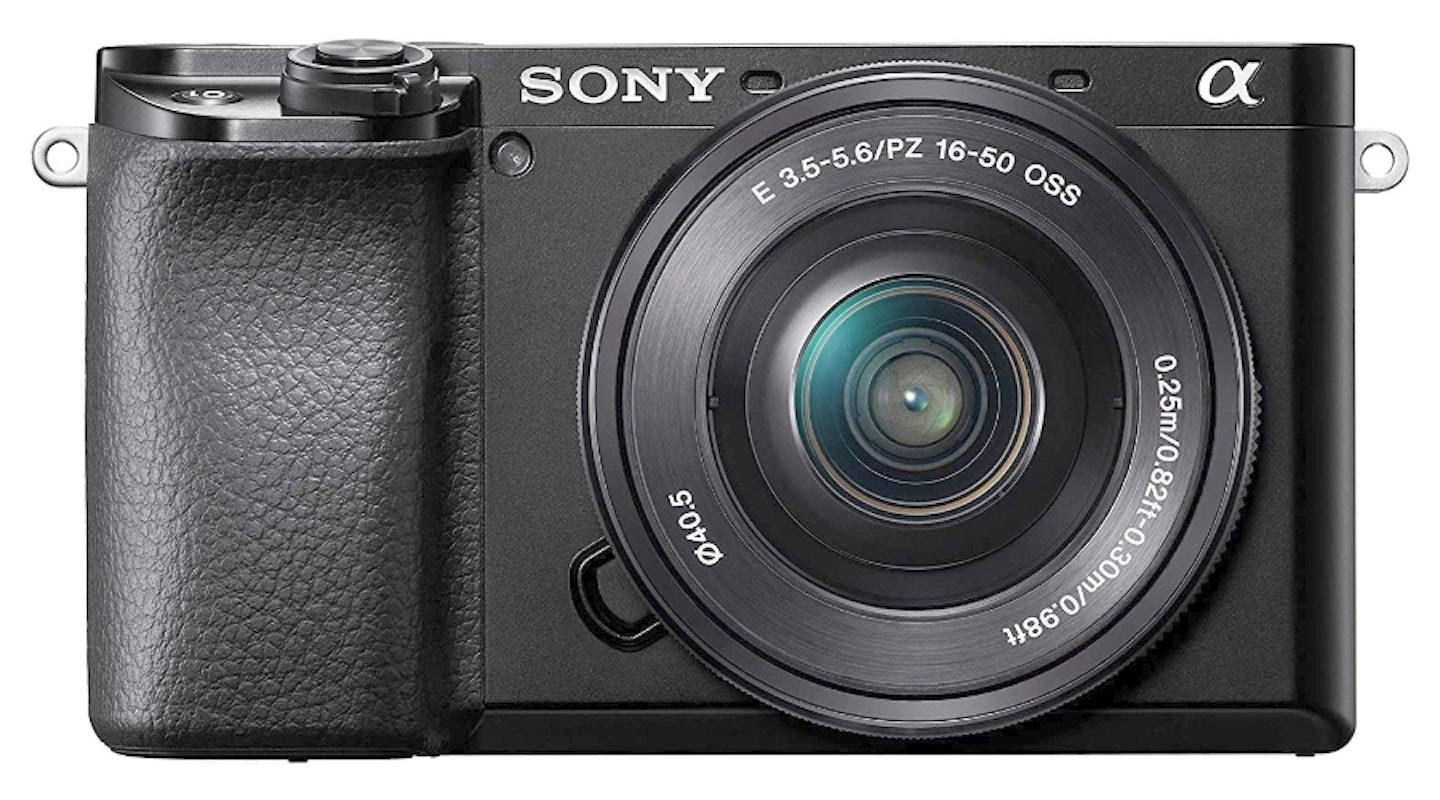 Sony
SonyLike the Sony α6400, but cheaper. You still get excellent image quality and speedy AF modes.
Who tested it?
The Sony α6400 was tested for the magazine Practical Photography by Ben Davis.
Why should you trust us?
At What's The Best, our mission is to provide accurate and reliable reviews, ensuring our readers receive honest and transparent information about the best technology products available. Anything less would undermine our commitment to being a trusted source of unbiased product information.
Our dedicated in-house writing team comprises experts with extensive experience and a genuine passion for technology. Collectively, we have spent decades testing and writing about tech, leveraging our expertise in all our articles, advice pieces and reviews.
We maintain complete editorial independence and do not accept payment for product reviews. Our writers have full control over their content, ensuring that products are selected based solely on the needs of our readers. While we may earn commissions or other compensation from links on our website, this never affects our product choices. These links enable us to continue offering valuable consumer advice, without compromising the integrity of our reviews.
How we test products at What's The Best
Real people, real reviews and trusted buying advice.
Tired of confusing tech reviews? At What's The Best, we cut through the jargon with down-to-earth product evaluations. Our team of experienced reviewers puts everyday gadgets to the test, using them just like you would. We don't waste time on unrealistic scenarios; instead, we focus on real-world performance that matters to consumers.
This means unbiased buying advice you can trust. We only review products that are significant and relevant, so you can be sure you're getting the latest insights. Haven't seen a review for what you're looking for? Don't worry, we're constantly adding new products to our growing catalogue.
For in-depth details on our testing process, visit our dedicated tech and electronics how we test page.

